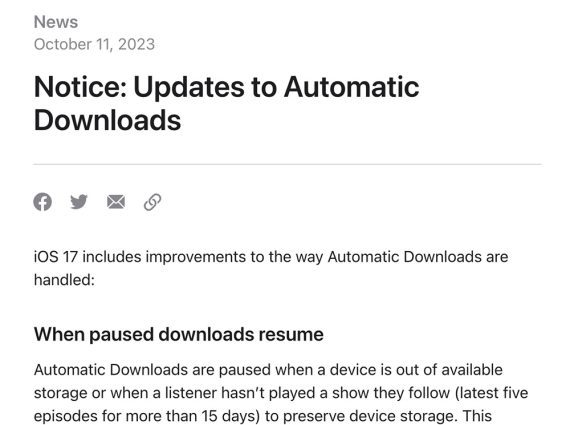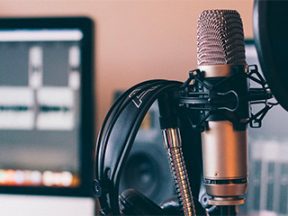A change to the way Apple’s iOS operating system manages automatic podcast downloads may impact a key performance indicator for advertisers.
For years, Apple Podcasts automatically paused episode downloads when a follower’s device storage was full or when she hadn’t played any of the last five episodes for more than 15 days. Then, when the follower (i.e., subscriber) resumed, Apple would download all unplayed episodes.
But no more. In an October 2023 notice to podcast creators, Apple stated iOS 17 would not download unplayed episodes automatically once a follower removed a pause.
Storage and Reality
The update has at least two advantages over Apple’s previous practice of downloading all episodes.
First, the new iOS 17 automatic download procedure preserves device storage. Episodes won’t automatically download if a follower has not played any of the last five episodes for 15 days.
Second, download counts will more closely reflect listens, improving the value of a “download” as a marketing metric.
Advertising
This iOS 17 update may also impact how podcast advertisers measure performance.
For many advertisers, the number of times an episode is downloaded indicates how many people listened and therefore the campaign’s reach.
What’s more, downloads are among the easiest podcast metrics to track and are frequently quoted along with others that include:
- Subscriber counts,
- Subscriber growth,
- Rankings,
- Reviews.
For businesses running brand or awareness campaigns, downloads are a key metric. Thus, if the goal is to get impressions — actual listeners — then the primary KPI just got better on the Apple platform.
On the other hand, the download metric is less meaningful for performance advertisers — those looking for specific outcomes, such as signups or sales. Even with iOS 17, some (or even many) downloaded episodes are not listened to. Say a podcast is published twice weekly. A follower would need to listen to just one of them in the previous two weeks for all to be downloaded.
Better Metrics
Certainly downloads will continue to be the primary podcast metric. But performance advertisers are likely better with alternative tracking methods.
Here are a few examples.
Promotional codes. Include a promotional code in the podcast advertisement. An ecommerce shop selling high-tech gadgets could include in its ad the promotional code “FUTURE20” for a 20% discount. Customers who use that code signal to the merchant it came from the podcast.
Vanity URL. Somewhat less effective for tracking performance is a vanity URL. Imagine you operate an eco-friendly home products brand. You advertise on an eco-focused podcast and include a unique URL, such as yourstore.com/eco, in the ad message. You might even offer unique content at that URL. Visitors to the URL presumably came only from the podcast.
Website traffic or sales. A business advertising in relatively few channels could likely use analytics data to identify traffic or sales from a podcast ad, especially if it is a unique offer, such as a specific product or service.
Surveys. A business might also implement post-purchase surveys, asking customers how they heard about the product or the brand. This is typically less accurate than a promotional code or vanity URL but helpful nonetheless.
Podcast Ads
An effective podcast ad before iOS 17 will remain that way afterward, regardless of the download counts. What has changed is using “podcast download” as a metric.






